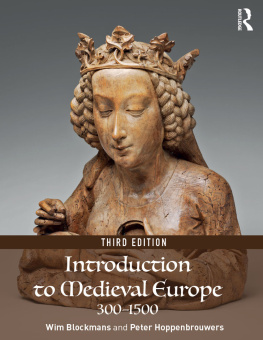Yet research continues, and it continues to be fruitful, because historians are not passive instruments, and because they read the same old documents with fresh eyes and with new questions in mind.
Preface
The major difference between Reading the Middle Ages, Vol. II, and other medieval history source books is its systematic incorporation of Islamic and Byzantine materials alongside Western readings. This second edition also includes new materials from East Central Europe. The idea is for students and teachers continually to make comparisons and contrasts within and across cultures. I have sometimes provided questions that I hope will aid this process, and Professor Bruce Venarde (University of Pittsburgh) has posed still other questions on the website for Reading the Middle Ages (www.utphistorymatters.com). Although this book may be used independently or alongside any textbook, it is particularly designed to complement the fourth edition of A Short History of the Middle Ages. The chapters have the same titles and chronological scope; the readings here should help expand, deepen, sharpen, and modify the knowledge gained there.
The sources in Reading the Middle Ages are varied; there are, for example, records of sales, biographies, hagiographies, poems, and histories. There is also a new section on visual sources, Containing the Holy. Some teachers may wish to assign all the readings in each chapter; others may wish to concentrate on only a few texts from each chapter.It is also easy to organize readings thematically by region: the index groups together all the sources pertaining to Italy, Spain, France, and so on.
The introduction to the first text in this book includes a discussion of how to read a primary source. The same project is repeated in chapter 4, this time with a very different sort of document. It should become clear to users of this book that the kinds of questions one brings to all documents are initially the same, but the answers lead down very different paths that suggest their own new questions and approaches. Each readers curiosity, personality, and interests become part of the process; this, even more than the discovery of hitherto unknown sources, is the foundation of new historical thought.
This is the place for me to acknowledgewith pleasure and enormous gratitudethe many debts that I have incurred in the preparation of this book. All those who contributed translations for this second edition deserve special thanks: Kristina Markman, Maureen Miller, Thomas F. X. Noble, William L. North, Frances Freeman Paden, William D. Paden, Carole Straw, and Bruce Venarde.
For advice, I thank Sheila S. Blair, Jonathan M. Bloom, Paul Cobb, Florin Curta, Zouhair Ghazzal, Monica Greene, Edin Hajdarpasic, Christine Meek, Maureen Miller, Faith Wallis, and Hiltrud Westermann-Angerhausen.
For special help, I thank The Emeryk Hutten-Czapski Museum, Jarosaw Bodzek, Edyta Gogowska; Loyolas librarians Elizabeth Andrew, Jennifer Jacobs, and Linda Lotten; and the University of Toronto Press people with whom I worked: Martin Boyne, Judith Earnshaw, Natalie Fingerhut, Beate Schwirtlich, and Daiva Villa.
I offer special thanks to Riccardo Cristiani, whose thoughtful and careful reading of the entire manuscript led to numerous corrections and clarifications. His index for this book provides the user with numerous reference tools, such as dates for all persons and titles of all readings and their dates. He also helped coordinate all names, places, and facts in this book with those in A Short History. I thank Bruce Venarde for his creative questions, posted on the web site for this book. Elina Gertsman, Piotr Grecki, and Kiril Petkov provided indispensible counsel. Finally I thank my family, and with this book I thank in particular its newest and very dear member, Amy Rosenwein. May she enjoy reading medieval sources almost as much as she loves playing the violin!
Abbreviations and Symbols
AH
Anno Hijra = year 1 of the Islamic calendar, equivalent to 622 CE
b.
before a date = born
b.
before a name = son of (ibn, ben)
BCE
before common era. Interchangeable with BC. See CE below.
bef.
On timelines = before
beg.
beginning
bt.
daughter of (bint)
c.
century (used after an ordinal number, e.g. 6th c. means sixth century)
c.
circa (used before a date to indicate that it is approximate)
CE
common era. Interchangeable with AD. Both reflect Western dating practices, which begin our era with the birth of Christ. In Reading the Middle Ages, all dates are CE unless otherwise specified or some confusion might arise.
d.
date of death
d.
dinar =









